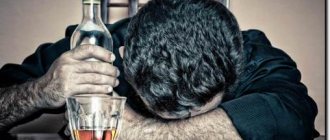What is split personality?
Split personality
is a popular term for DRL. In the past, this was known as multiple personality disorder. People with DID have two or more distinct personalities. Often these individuals are completely different from each other. These fragmented personalities take control of a person's personality for a while.
The person retains his primary identity, which is his original personality, and will respond to the name given to him. Their primary identity is usually more passive and may not be aware of other personalities.
When a personality change occurs, the new personality will have a history, a new identity, and different behavior. These split personalities, or alterations, often have their own distinctive characteristics:
- Name
- age
- floor
- mood
- memories
- vocabulary
The new personality will see itself differently. For example, a man may have an alternate personality of a woman. He will experience female biological sex characteristics. A shift between these personalities usually occurs when a person encounters a particular stressor or trigger.
What is dissociative identity disorder from a diagnostic point of view?
- A person’s personal states change, each of which has its own characteristic features of worldview and its own memory.
- Behavior is controlled alternately by one identity and then by another. There must be at least two.
- A person has his basic personality. Let's put it this way - corresponding to the passport data. However, the moment after “switching” to another personality, he forgets what is associated with this main personality. And this is not ordinary pretense or simulation, not ordinary forgetfulness.
- It is excluded that the condition is a consequence of the use of alcohol, drugs, some psychoactive substances, intoxication and somatic illness.
All this applies specifically to the diagnosis of the disorder itself. But this type of dissociative disorder would not be such if loss of self-identity were the only element. In practice, a symptom complex is formed from mood disorders, various phobias and panic attacks, sleep disorders, and eating disorders. It is also possible that standard productive symptoms may appear in the form of hallucinations or pseudohallucinations. We don’t say anything about delusion, since the psychiatrist who could clearly and clearly differentiate between everything that the patient says on behalf of alternative personalities and delusion has not yet been born. This is simply impossible.
In dissociative disorder, a person may “switch” from one personality to another
Such an assurance quite seriously removes the touch of romanticism from this disorder and leaves no ground for speculation about the confirmation of the reincarnation of souls. Does this exist at the level of metaphysics, are new incarnations possible? This is a separate topic, and we are talking about dissociative identity disorder, the symptoms of which exclude the construction of hasty theories.
Worth seeing: Is Alzheimer's disease inherited?
Split personality - symptoms
Signs of DID may vary, but they involve changes between two or more distinct personalities.
Symptoms include:
- The experience of two or more separate individuals, each with its own identity and perception
- A noticeable change in a person's sense of self
- Frequent lapses in memory and personal history that are not due to normal forgetfulness, including memory loss and forgetting of everyday events
When other personalities take over, the person often speaks differently and gestures differently. In some cases, one personality may also acquire certain habits that another does not, such as smoking or violent tendencies.
When transitioning from one personality to another, a person may experience other symptoms. Some people may experience anxiety because they are afraid of personality changes. Some can become very angry and cruel. Others may not notice or remember these transitions at all, although another person may notice them.
Specific personalities may emerge in response to certain situations. These symptoms can cause significant distress to a person and impair their ability to live a normal life.
Other symptoms may include:
- amnesia
- loss of sense of time
- going into a trance state
- out-of-body experiences, or depersonalization
- engaging in behavior that is unusual for the person
- sleep disturbance
A person with DID may also have symptoms of other conditions, such as self-harm. The study notes that more than 70% of people with DID have attempted suicide.
Treatment of the disease Dissociative disorder
Treatment for dissociative disorders may include psychotherapy, medication, or a combination of both.
In the case of psychotherapy, patients often need the help of a doctor who specializes in this problem and has experience in treating dissociative disorders. Such knowledge is especially necessary if the patient's symptoms are expressed by problems defining personal identity.
Some doctors prescribe tranquilizers or antidepressants for excessive activity, anxiety, and/or depression, which often co-occur with dissociative disorders. However, patients with dissociative disorders are more susceptible to addiction and dependence on medications.
Hypnosis is often recommended as a treatment for dissociative disorders, partly because hypnosis is associated with the process of dissociation. Hypnosis helps you get rid of depressing ideas or memories. Professionals treating patients with DID occasionally use hypnosis in the process of "closing out" alternate personalities.
The prospects for recovery from dissociative disorders vary. Recovery from dissociative escape usually occurs quickly. Dissociative amnesia can be cured fairly quickly, but in some patients it can become a chronic disorder. Depersonalization, DDNOS, and DID are typically chronic conditions. Treatment for DID will require at least five years of continuous treatment.
Risk factor
Trauma often triggers as a psychological reaction and is therefore a strong risk factor, especially in childhood. This one could be:
- physical violence
- sexual violence
- emotional neglect
- psychological abuse
In some cases, the child may not experience obvious forms of abuse. For example, he may live with unpredictable parents and begin to dissociate in response to stress.
Dissociative identity disorder can occur alongside other disorders. This means that several mental disorders can arise from the same cause.
Other common disorders that may occur along with DID include:
- borderline personality disorder
- depression
- substance use
- post-traumatic stress disorder
- eating disorder
- anxiety
- obsessive-compulsive disorder
Causes of the disease
Dissociative disorders constitute a whole group of diseases that combine different symptoms and manifestations. But such disorders are quite rare; according to researchers, they account for about 3% of all mental illnesses.
It is very difficult to understand the reasons for the occurrence of dissociation in the human psyche; today it is believed that in the process of illness, individual thoughts, memories, sensations in the human brain become isolated and isolated from each other, creating, as it were, “separate” reflections of reality, which the other part of the psyche does not perceive as own.
If the human psyche has a predisposition to the emergence of such “isolated” components, then a dissociative split may develop, and then a disorder, and so on. Up to 10 different “participants” can coexist in the human psyche, often directly opposite in nature.
This syndrome became widely known after the book “Sibyl” by F. R. Schreiber was published. The main character of the work, Sibyl, suffers from the fact that her personality is multiple and consists of 16 separate “I”. The events described in the book are real; in fact, the existence of such a patient is confirmed by mentions in the works of various scientists.
A similar disorder is vividly, although not very accurately, described and presented in filmography: the kindest Dr. Jekyll, who, under the influence of drugs, turned into the ape-like Hyde.
The cause of the development of the disorder is considered to be the ability of the psyche to the so-called “trance” state and severe stress that affected the human psyche.
Such disorders were observed in people, more often women, who suffered severe stress in childhood or adolescence: physical violence, sexual harassment, who witnessed military operations, accidents, murders, and so on. Unable to cope with such experiences, the child’s psyche “displaces” unpleasant experiences into the subconscious, from which an “additional” personality can then emerge.
Most often, this happens if a person finds himself in conditions that his psyche cannot withstand without damage to himself, and then the frightened, weak personality is replaced by another - stronger, capable of coping and surviving in the changed conditions.
In a more favorable environment, the emerging personality disappears, but the psyche “remembers” this way of dealing with the environment and, when an unpleasant episode repeats, it can react in the usual way, returning the “old” personality or creating a new one.
Over time, such transitions become more and more frequent, the number of personalities increases, and their change occurs regardless of external conditions. The transition can be triggered by some event or trigger: an emotion, a phrase, a sound, or even a color.
In some nationalities, such a personality disorder under certain conditions is not considered a pathology. By using special substances that have a disinhibiting effect, these people can begin to speak on behalf of ancestors, long-dead people or other entities.
It is believed that when entering a trance state, even an absolutely healthy person can cause the emergence of a “new” personality, since each of us has memories or events that are “repressed” into the subconscious in ordinary life.
Diagnostics
It takes time to make a diagnosis. Misdiagnosis is common, and doctors need to watch for symptoms and ignore other conditions. To make a proper diagnosis, doctors need to see different personalities and how they affect a person.
Time is also an important factor in seeing the full extent of symptoms. This is because people who seek help for DID usually have symptoms associated with other mental illnesses. In addition, the doctor must rule out symptoms of other conditions before making a diagnosis.
Differential diagnosis
It is very difficult to accurately diagnose dissociative disorder. The large number of forms and variety of manifestations makes diagnosing the disease difficult; sometimes it takes several years to establish a diagnosis, and some doctors generally refuse to consider dissociative disorder a separate psychiatric disease. Patients may undergo treatment and observation for several other mental illnesses: depression, neurosis, schizophrenia and others, before they are given an accurate diagnosis.
To do this, the patient must undergo a complete examination:
- general blood and urine tests, for thyroid hormones, metabolic enzymes, the content of narcotic and other substances;
- ECG;
- MRI of the brain;
- EEG;
- cerebrospinal fluid analysis;
- Ultrasound of internal organs;
- examination by a neurologist, surgeon, endocrinologist.
Differential diagnosis is carried out with diseases such as anxiety personality disorder, post-traumatic stress disorder, epilepsy, schizophrenia, and retardation disorder.
To exclude these diseases, they use the method of long-term observation of the patient, the method of keeping a diary, special questionnaires and the use of certain medications that help to exclude other mental illnesses. Sometimes only hypnosis and observation of the patient in a hospital setting helps to make a diagnosis.
Treatment
Treatment of dissociative disorder requires a lot of time and great effort on the part of the attending physician and the patient himself. Treatment in a hospital and taking medications only helps to neutralize the symptoms of the disease and reduce its clinical manifestations, but cannot help cope with the decay or dissociation of the patient’s personality. This requires long-term treatment with a psychotherapist, preferably one who specializes in the treatment of dissociative disorders.
Uniting the personality into one whole is possible by identifying the reasons for the development of dissociation and attempts to return the patient to a basic sense of security, after which usually the number of personalities is reduced or they manage to “agree” with each other. Sometimes the splitting of consciousness becomes so familiar to the patient that the most effective way of treatment is to “get to know” all the individuals and try to establish communication with each other.
For this purpose, cognitive, personality-oriented, behavioral psychotherapy, hypnosis or psychoanalysis are used.
Treatment
There are no recommendations on how to treat DID. Doctors prescribe specific treatment in each specific case.
Treatment plans depend on the conditions that occur along with DID and may combine psychotherapy with necessary medications to help with symptoms.
Psychotherapy
Psychotherapy, or talk therapy, is the main treatment for people with DID. Methods such as cognitive behavioral therapy can help a person work through and learn to accept the triggers that cause personality changes. In DID, psychotherapy aims to help integrate a person's personality and learn to cope with post-traumatic experiences.
Other types of therapy
Art therapy, movement therapy, and relaxation techniques may all have a place in the treatment of DID. These techniques can help people connect aspects of their consciousness in a low-stress environment.
Treatment methods
The main task of treating dissociative disorder is to integrate all identities, to unite them with the personality of the patient. The main method that can solve this problem is psychotherapy. Sometimes concomitant treatments are used to relieve symptoms of other disorders, such as depression. These include taking medications and remedies prepared according to traditional recipes.
Medications
Medications for the treatment of dissociative identity disorder are prescribed only by the attending physician if the patient has concomitant mental disorders.
This is interesting: Breast tumor markers: diagnosis and interpretation
Drug treatment may include the following groups of drugs:
- neuroleptics (haloperidol, droperidol, thioproperazine). They are used for severe mental disorders accompanied by paranoia, delusions, and hallucinations. Antipsychotics used for depression have a disinhibiting, activating effect, but at the same time suppress feelings of fear and reduce tension;
- tranquilizers (phenazepam, diazepam, chlordiazepoxide, medazepam). The drugs relieve fear and anxiety, relieve emotional stress. They have a pronounced calming effect and normalize sleep;
- nootropics (nootropil, mexidol, phenotropil, cinnarizine, glycine, cerebrolysin, phenibut). The effect of the drugs is a complex effect on the central nervous system, they increase the level of mental activity, improve cognitive functions, memory and attention;
- mood stabilizers (valproic acid, lithium carbonate, lithium oxybate). The drugs can prevent the development of depressive and manic symptoms, severe mood swings;
- sleeping pills (trypsidan, donormil, andante). The drugs are used for sleep disorders;
- B complexes (blagomax, nutrilight, biomax). These vitamin complexes are necessary for a general strengthening effect on the central nervous system. They have a positive effect on intellectual abilities.
Traditional methods
Traditional methods are part of complex therapy in the treatment of dissociative identity disorder. Recipes for folk remedies are aimed at calming, preventing nervousness and improving sleep.
- Collection for calm. For cooking you need 1 tsp. valerian, 1 tsp. St. John's wort, 1 tsp. chamomile, which must be mixed and brewed with a glass of boiling water. The resulting mixture should be left for 20 minutes, strain and drink 1 tbsp. each hour. Collection takes about 2 weeks.
- Blooming Sally. Herbal tincture relieves the patient from insomnia. To prepare the solution, you need to brew 15 g of fireweed tea and infuse it for at least 10 hours. The resulting drink should be strained and taken before bed.
- Tea with motherwort, lemon balm, St. John's wort and valerian. For preparation you need 13 g of St. John's wort, 16 g of motherwort, 3 g of hawthorn, 10 g of valerian roots, 10 g of lemon balm. The mixture must be poured with 1 cup of boiling water and allowed to brew for no more than 10 minutes. The resulting tea must be strained and drunk at night. The product helps get rid of nervous tension and insomnia.
- A decoction of mint and lemon balm. Mint and lemon balm relieve stress and promote good sleep. 1 tbsp. l. a mixture of these two herbs should be poured into 200 ml of boiling water, allowed to cool and drunk in equal portions throughout the day. The decoction helps to calm down and normalize sleep during depression.
Other methods
Dissociative identity disorder is treated with therapy from a psychotherapist or psychiatrist. The main task of the specialist is to integrate the patient’s alternative personalities, weakening their power and ability to control the consciousness of the patient’s main personality.
The therapy model consists of the following stages:
- Stabilization. At this stage, the therapist builds communication with the patient to stabilize his mental state and reduce stress levels in order to prevent a change of identities and the emergence of undesirable conditions.
- Processing traumatic experiences, eliminating dissociation. Here the specialist works to eliminate the patient’s amnesia and the ability to change one identity to another. The psychotherapist also examines the patient’s dissociative memories and combines them with the real state. At this stage, it is necessary to complete the main task - to unite the patient’s alternative personalities.
- Rehabilitation therapy. After the second stage has been completed, the deviations that formed in the patient as a result of prolonged adaptation to changing identities are eliminated.
The specialist may use the following techniques during treatment:
- dream interpretation. The patient's experiences may resonate in his dreams, so their correct analysis can provide useful information about the patient's condition;
- pronunciation. The technique involves addressing the patient's entire personality system. This allows the patient to perceive his identity in a holistic state;
- search for an “inner assistant.” “Inner assistant” is a state of personality that responds well to therapy, makes contact with a specialist and is interested in the progress of treatment. The doctor tries to find this condition in the patient in order to make therapy more productive;
- search for the “inner pursuer.” “Inner persecutor” is a personality state that interferes with the patient’s recovery. The specialist’s task is to find this condition, identify the cause of its occurrence and begin to work on it;
- drawing up a personal diagram. This technique reflects an understanding of the patient's personalities, their needs and desires. The personal scheme includes connections between identities and helps the specialist understand the role of each of them and begin to work with them;
- hypnosis. The state of hypnosis allows the specialist to identify all the personalities and talk to each of them. The purpose of introducing the patient into this state is to find the relationship between identities, stabilize them and facilitate integration.
During the process of identifying and eliminating the causes of dissociation, therapy is aimed at facilitating the switching of personalities and their rehabilitation. At the same time, the patient’s relationship with society is being worked out, mechanisms of activity and behavior in life spheres are being built.
Sometimes spontaneous integration occurs during treatment. To speed up this process, it is necessary to discuss the organization of personalities with the patient and instill in him mental images that contribute to the unification of identities.
Causes
There are several theories explaining the occurrence of dissocial disorder:
- Some believe that this condition appears due to the lack of parental care and love in childhood, poor and poor living conditions. Thus, children become cruel, see violence in the family, constant conflicts and troubles, as a result of which they themselves copy the behavior of their elders.
- Other theorists believe that the disorder may be acquired as a result of imitation or imitation of parents or people whom the child respects.
- There is a version that the cause is the interaction of hereditary and environmental factors. This means that the onset of the disease is influenced by both internal factors and the behavior of others, which the teenager copies.
- Unfavorable social conditions should be identified as a separate group. This includes a high crime rate in a city or country, military operations, and a difficult economic situation.
- The causes of the disorder can also be concomitant mental illnesses: schizophrenia, brain injuries, mental retardation, etc.
It is important to understand what became the true cause of the disease, because this is the only way to find and offer effective treatments. One of the causes of dissocial disorder is lack of parental care in childhood.
One of the causes of dissocial disorder is lack of parental care in childhood.











